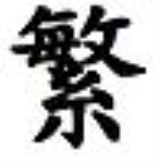
Shu Fan movement
Encyclopedia
The Sufan movement launched in 1955 was one instance of a recurring, politically charged atmosphere in official organisations and social life in the People's Republic of China under Mao Zedong
. The term sufan is short for 肅清暗藏的反革命分子, and can roughly be taken as referring to a 'purge' of ideological heretics. Historically, the earliest Chinese communist Sufan had been intiated by Zhang Guotao
in 1932.
On 1 July 1955, the Chinese Communist Party Central Committee issued a "Directive on launching a struggle to cleanse out hidden counter-revolutionary elements" (關於開展鬥爭肅 清暗藏的反革命分子的指示). On 25 August 1955,it issued "The directive on the thorough purge
and cleansing of hidden counter-revolutionaries" (關於徹底肅清暗藏反革命分子的指示). The targets of directives like these were individuals inside the communist party, the government bureaucracy, and military personnel. This was in contrast to the earlier Zhen Fan
movement that had mainly targeted former Kuomintang
personnel.
There were three categories of Sufan targets:
In many if not all parts of China, the Sufan movement ended in late 1956. Jean-Louis Margolin writes in The Black Book of Communism
that one source indicates 81,000 arrests during the campaign (which he claims is rather modest), while another gives 770,000 deaths. He concludes that there is no way to determine which is accurate.
Mao Zedong
Mao Zedong, also transliterated as Mao Tse-tung , and commonly referred to as Chairman Mao , was a Chinese Communist revolutionary, guerrilla warfare strategist, Marxist political philosopher, and leader of the Chinese Revolution...
. The term sufan is short for 肅清暗藏的反革命分子, and can roughly be taken as referring to a 'purge' of ideological heretics. Historically, the earliest Chinese communist Sufan had been intiated by Zhang Guotao
Zhang Guotao
Zhang Guotao was a founding member and important leader of the Chinese Communist Party and bitter rival to Mao Zedong. During the 1920s he studied in the Soviet Union and became a key contact with the Comintern and organized the CCP labor movement in the United Front with the Guomindang...
in 1932.
On 1 July 1955, the Chinese Communist Party Central Committee issued a "Directive on launching a struggle to cleanse out hidden counter-revolutionary elements" (關於開展鬥爭肅 清暗藏的反革命分子的指示). On 25 August 1955,it issued "The directive on the thorough purge
Purge
In history, religion, and political science, a purge is the removal of people who are considered undesirable by those in power from a government, from another organization, or from society as a whole. Purges can be peaceful or violent; many will end with the imprisonment or exile of those purged,...
and cleansing of hidden counter-revolutionaries" (關於徹底肅清暗藏反革命分子的指示). The targets of directives like these were individuals inside the communist party, the government bureaucracy, and military personnel. This was in contrast to the earlier Zhen Fan
Zhen Fan
The Campaign to Suppress Counterrevolutionaries was the first political campaign launched by the People's Republic of China designed to eradicate opposition elements, especially former Kuomintang functionaries accused of trying undermine the new Communist government...
movement that had mainly targeted former Kuomintang
Kuomintang
The Kuomintang of China , sometimes romanized as Guomindang via the Pinyin transcription system or GMD for short, and translated as the Chinese Nationalist Party is a founding and ruling political party of the Republic of China . Its guiding ideology is the Three Principles of the People, espoused...
personnel.
The targets of Sufan
The People's Daily, in an attempt to provide justification for the purge, reported that ten percent of Communist Party members were secret traitors and needed to be purged. This number appears to have been taken as a quota for the number of arrests that needed to occur.There were three categories of Sufan targets:
- Ex-Kuomintang personnel, regardless of war captive or surrender.
- Anyone with landlord or wealthy families.
- Students and literati.
In many if not all parts of China, the Sufan movement ended in late 1956. Jean-Louis Margolin writes in The Black Book of Communism
The Black Book of Communism
The Black Book of Communism: Crimes, Terror, Repression is a book authored by several European academics and edited by Stéphane Courtois, which describes a history of repressions, both political and civilian, by Communist states, including genocides, extrajudicial executions, deportations, and...
that one source indicates 81,000 arrests during the campaign (which he claims is rather modest), while another gives 770,000 deaths. He concludes that there is no way to determine which is accurate.

